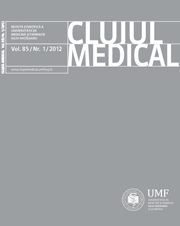The importance of dopamine transporter imaging in the diagnosis of Parkinson’s disease
Keywords:
Parkinson’s disease, parkinsonism, dopaminergic neurons, dopamine transporterAbstract
Parkinson’s disease (PD) is the second most common neurodegenerative disorder. The loss of dopamine neurons in the substantia nigra and the reduction of dopamine projections to the striatum play a determining role in the physiopathology of the disease. The diagnosis of PD is still dependent on a clinical evaluation and as a result it is subject to a significant margin of error especially in the early stages of the disease. Dopamine transporter (DAT) imaging is a modern method of identifying the presynaptic dopaminergic dysfunction in the nigro-striatal structures, allowing early diagnosis of degenerative parkinsonism. Also DAT imaging is an important and sometimes decisive instrument in differentiating between the parkinsonism apparent in PD and other types of parkinsonism.Downloads
Published
2012-01-30
How to Cite
1.
Perju-Dumbravă LD, Muntean M-L, Mureşan DF. The importance of dopamine transporter imaging in the diagnosis of Parkinson’s disease. Med Pharm Rep [Internet]. 2012 Jan. 30 [cited 2025 Nov. 5];85(1):27-30. Available from: https://medpharmareports.com/index.php/mpr/article/view/317
Issue
Section
Reviews
License
The authors are required to transfer the copyright of the published paper to the journal. This is done by agreeing to sign the Copyright Assignment Form. Whenever the case, authors are also required to send permissions to reproduce material (such as illustrations) from the copyright holder.

The papers published in the journal are licensed under a Creative Commons Attribution-NonCommercial-NoDerivatives 4.0 International License.

